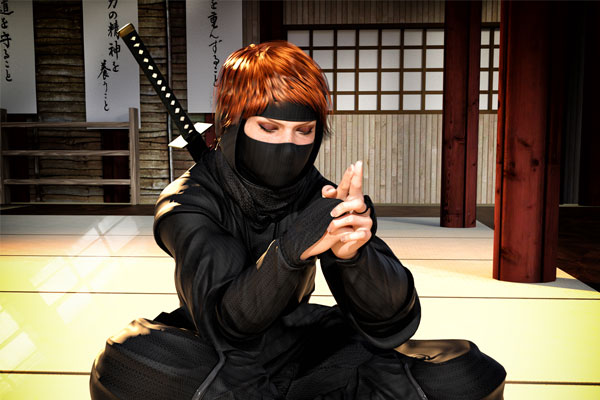Martial Arts Near Me
Ninjutsu
Steeped in mystery and folklore, ninjutsu has long captivated the imagination of many, conjuring images of stealthy warriors clad in black. Originating from ancient Japan, this 2,000-year-old tradition remains shrouded in secrecy, fueling countless legends and misconceptions. Referred to as the "art of stealth," ninjutsu encompasses a wide array of techniques, ranging from espionage and guerrilla warfare to survival and self-defense skills. Today, as the world evolves, ninjutsu finds itself at a unique crossroads - adapting to modernity while striving to preserve its ancient roots.
To comprehend the origins of ninjutsu, one must delve into the fascinating history of ancient Japan itself. During the feudal period (12th to 19th century), Japan was marked by a turbulent era of samurai warfare. Ninjutsu emerged as a clandestine response to this chaotic environment. Originating in the region of Iga and Kōga, the ninja, or shinobi as they were also known, were expert spies and assassins who mastered the art of covert warfare. Their skills were born out of necessity, closely guarded and passed down through generations.
Unlike other martial arts, ninjutsu is not focused on honorable combat on open battlefields. Instead, it centers around the principle of winning by any means necessary, employing cunning strategies, and utilizing the surrounding environment to its full advantage. The techniques encompassed in ninjutsu were diverse and multifaceted, touching upon the realms of military strategy, infiltration, disguise, espionage, and sabotage.

At the core of ninjutsu lies the concept of invisibility, both physical and psychological. Ninja warriors honed their abilities to disappear into the shadows, blending seamlessly with their surroundings. Stealth became their key strength, allowing them to execute missions undetected and vanish without a trace. They became masters of disguise, adopting different personas depending on the mission's requirements. By leveraging deception, a vital component of their art, ninjas were able to outwit their enemies and strike swiftly.
Combat and self-defense formed another cornerstone of ninjutsu. Combining knowledge of weapon utilization, unarmed combat, and strategic maneuvering, ninja warriors were formidable adversaries. They developed an arsenal of weapons unique to their art, including the famous kunai, shuriken, and various ingenious tools designed for both offense and defense. A tactical approach to combat was dominant, focusing on exploiting an enemy's weaknesses while minimizing one's own exposure.
Throughout the centuries, ninjutsu faced challenges as Japan underwent rapid social and political transformations. These changes ultimately rendered the traditional role of the ninja obsolete. The abolition of samurai class, the decline of feudal warfare, and the emergence of centralized governance all contributed to the decline of ninjutsu's practical application. Moreover, the Meiji Restoration in the late 19th century aimed to modernize Japan, eroding the once-secretive ways of the ninja.
However, as ninjutsu's role as a practical art diminished, its spiritual essence endured. The tradition found new life as an embodiment of ancient wisdom, embodying principles of mindfulness, discipline, and self-improvement. In contemporary society, the study of ninjutsu has transcended its martial roots, attracting practitioners seeking personal transformation and a connection to Japan's rich cultural heritage.
Today, ninjutsu remains an esoteric and niche practice, passed down within select lineages. Practitioners, called ninjas or shinobi, dedicate themselves to understanding the art's intricacies. They train in ancient techniques, delving into the nuances of stealth, strategy, and self-defense. Yet, the evolution of society necessitates adaptations to the original art. Modern practitioners of ninjutsu understand the need to bridge the gap between the past and present, combining ancient knowledge with contemporary perspectives.
To maintain relevance, ninjutsu has branched out, incorporating elements from other martial arts and self-defense systems. The art has diversified, accommodating practitioners with different physical abilities and goals. Contemporary ninjutsu includes tactical training, survival skills, and a focus on holistic well-being. It expands beyond combat techniques, promoting a mindset of self-awareness, adaptability, and resilience.
Ninjutsu's current status is reflective of a modern world in which ancient traditions vie against the relentless tide of progress. While commercialized depictions of ninjas in popular culture often blur the line between fact and fiction, the art's rich heritage perseveres. The future of ninjutsu hinges upon retaining its essence, without compromising its integrity, and finding harmony between ancient wisdom and the demands of a rapidly changing world.
This dynamic equilibrium will determine if ninjutsu endures as a living tradition, inspiring new generations to explore its depths or faces fading silently into the past, a mere whisper in the annals of history.